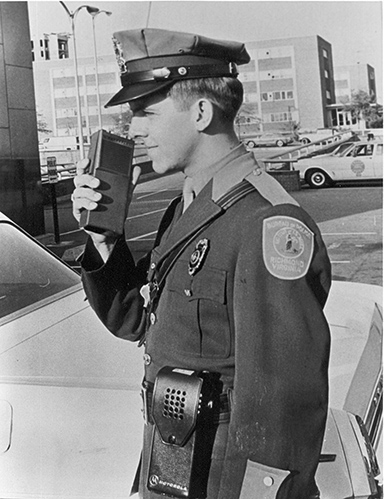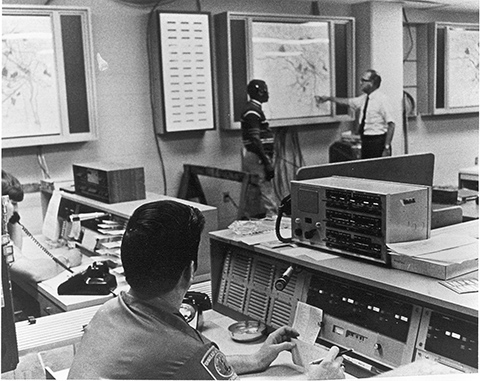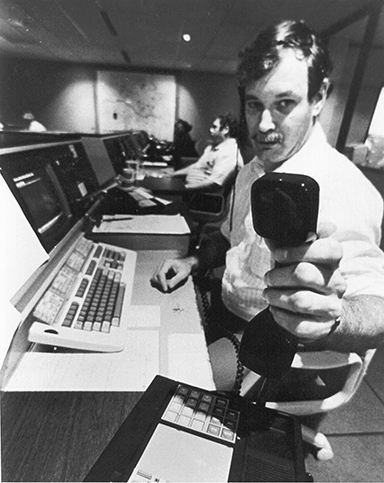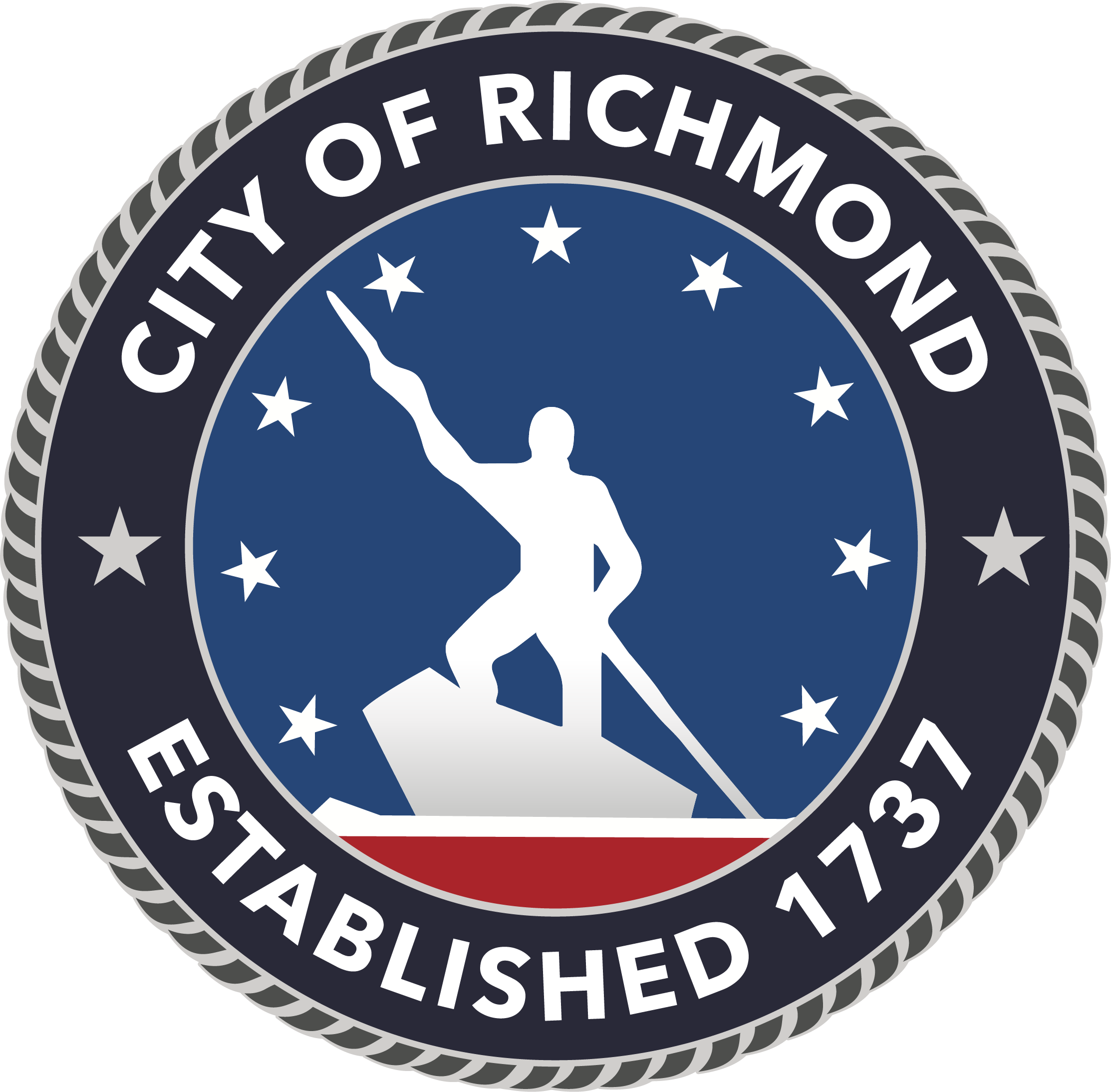911: Call if you can, text if you can't
Non-Emergency /
file a Police Report:
804-646-5100
Do not email or post requests for emergency help on social media.
You must call or text 911 for 24-hour monitoring.
For nonemergency public safety help,
call 804-646-5100.

History of emergency communications in the city of Richmond
The following history was compiled and shared by Bonnie Hoskin, who retired from the city of Richmond with 30 years of service in 2002.
Please click on each section below to read about the history from 1742 to the present. For the most recent information from the Richmond Department of Emergency Communications, please read the news releases on the online newsroom page.
1742
Richmond is incorporated as a town by an act of the Virginia Assembly. The only means of “emergency communications” was a bell located at the Market House at 17th and Main streets that was rung when a fire was discovered.
1870
The city’s first electric “Fire Alarm and Police Telegraph System” was installed.
1871
The Department of Fire Alarm and Police Telegraph was created.
1893
Fire Alarm and Police Telegraph moved into the new city hall at 10th and Broad streets. A Police Patrol System was established at Second Police Station under the care of the Fire Alarm Department.
1906
The Police Patrol System was moved to City Hall.
1919
A charter amendment established the Department of Public Safety to include the Police and Fire departments, the Bureau of Fire and Alarm and Police Telegraph, Building Inspections and Weights and Measures.
1924
Bureau of Fire Alarm and Police Telegraph moved into its new quarters at Monroe Park.
1934
The police broadcasting system was installed at Second Station at Smith and Marshalls streets with one patrolman and two civilian radio operators
1937
The police radio station, WPHF, was moved from Second Station to Police Headquarters at City Hall Annex, 11th and Broad streets.
1939
Two-way radio equipment was installed in all of the police cars.
1940
Mobile radios, tuned to the police band frequency, were installed in the Fire Bureau cars.
1945
The first two-way radio was installed in the fire pumper at Engine Co. 19.
1949-50
The radio system moved from low band (30-40 Mc) to high band (150-160 Mc) frequencies. The Division of Communications and Records was established.
1954
Pneumatic tubes were installed at police headquarters to send messages more quickly from the complaint desk to the radio dispatcher

1955-56
A three-way radio system was installed in the police bureau, which allowed officers in police cars to talk by radio to other police cars
1957-58
The Fire Alarm and Police Telegraph was placed under the Bureau of Fire.
1958
A radio tower erected in Monroe Park enabled the Fire Bureau to have its own radio system.
1959
The Communications and Records Section was renamed the Services Division.
1964
The Police Bureau moved into the new Safety-Health-Welfare Building at 501 N. 9th Street.
1966
Walking patrol officers began using walkie-talkie radios to communicate with dispatchers.
1971
Emergency Reporting Telephone System (ERTS), a citywide network of free sidewalk telephones that gave citizens a direct line to police, fire or other emergency services, was installed.

1971
In September, the Bureau of Emergency Communications began operations in the basement of the Safety-Health-Welfare Building and was staffed by civilian dispatchers. Messages received by the operators were sent on cards via conveyer belt to the affected radio.
1977
In January the Bureau of Police began converting to the 460 MHz ultra-high frequency (UHF) band.
1977
In December, the city of Richmond and Henrico County became the first in the state to adopt the 9-1-1 emergency number.
1982
The Police Computer Assisted Dispatch (CAD) system became fully operational. Complaints were typed into a computer, assigned a priority, the address verified, and the information immediately transmitted to the radio dispatcher.
1982
The ERTS boxes were removed, and for the first time since 1870, Richmond had no call boxes.
1983
The Fire Computer Assisted Dispatch System was activated.
1984
An Emergency Medical Dispatch System was implemented. Certified bureau personnel gave pre-arrival self-help medical instructions.
1986
The basic 9-1-1- system was replaced with the enhanced system.

1990
The Bureau of Emergency Communications became accredited by the Department of Criminal Justice Services Training Academy.
1992
The Department of Emergency Communications was established.
1997
Emergency Communications was placed under the Department of Business Services.
1998
The Department of Business Services was abolished and all of its organizational units were incorporated into the Department of Public Works.
1999
The first Dispatcher’s Academy graduated 12 communications officers after six weeks of training.
2001
Emergency Communications was transferred to the Police Department. A 20-channel digital 800 MHz radio communications system was completed, along with a new communications center located at 3516 N. Hopkins Road.
2001
For the first time since the creation of the civilian agency in 1971, the division became uniformed.
2006
A new, Microsoft Windows-based 9-1-1 system replaced the 25-year-old one in use.
2012
A digital, personal-computer phone system was installed to automatically distribute incoming calls to the call-takers.
2014
Emergency Communications, once again, became an independent department within the city of Richmond.
2017
The Department of Emergency Communications began accepting text messages for 911 emergencies in December, but it was not announced until June 2018 to allow time for the surrounding counties to establish the service.
2018
On June 4, text-to-911 services officially begin in Richmond and the surrounding capital region with a news conference announcement. Read more
2019
The Department of Emergency Communications earned its first national Public Safety Communications Accreditation on May 4, 2019, from the Commission on Accreditation for Law Enforcement Agencies Inc. (CALEA). Less than 2 percent of emergency communications centers in the country earn accreditation. Read more.
The Training Center, a new 4,300-square-foot addition to the existing Emergency Communications Center building, officially was opened with a Ribbon-Cutting and Open House on May 30. Read more.
2021
In planning since 2018, the Department of Emergency Communications switched to an Internet-Protocol-based 911 system in October 2021 to prepare for future advancements of Next Generation 911. Read more.
2022
The Department of Emergency Communications made changes in late 2021 and through 2022 to improve the response to those in mental and behavioral health crises. On Sept. 15, co-response teams of police officers and mental health providers began to be dispatched on some of these calls, marking the full implementation of Marcus Alert in Richmond.
On Oct. 10, the Department of Emergency Communications began using a structured protocol system for call-taking. Read more.
On Nov. 14, Richmond City Council approved the mayor's proposal of the new name of the Department of Emergency Communications, Preparedness and Response to reflect the department's additional responsibilities and incorporation of the Office of Emergency Management. Read more.
2023
The Department of Emergency Communications, Preparedness and Response earned its second national Public Safety Communications Accreditation on July 27, 2023, from the Commission on Accreditation for Law Enforcement Agencies Inc. (CALEA). Less than 2 percent of emergency communications centers in the country earn accreditation. Read more.







